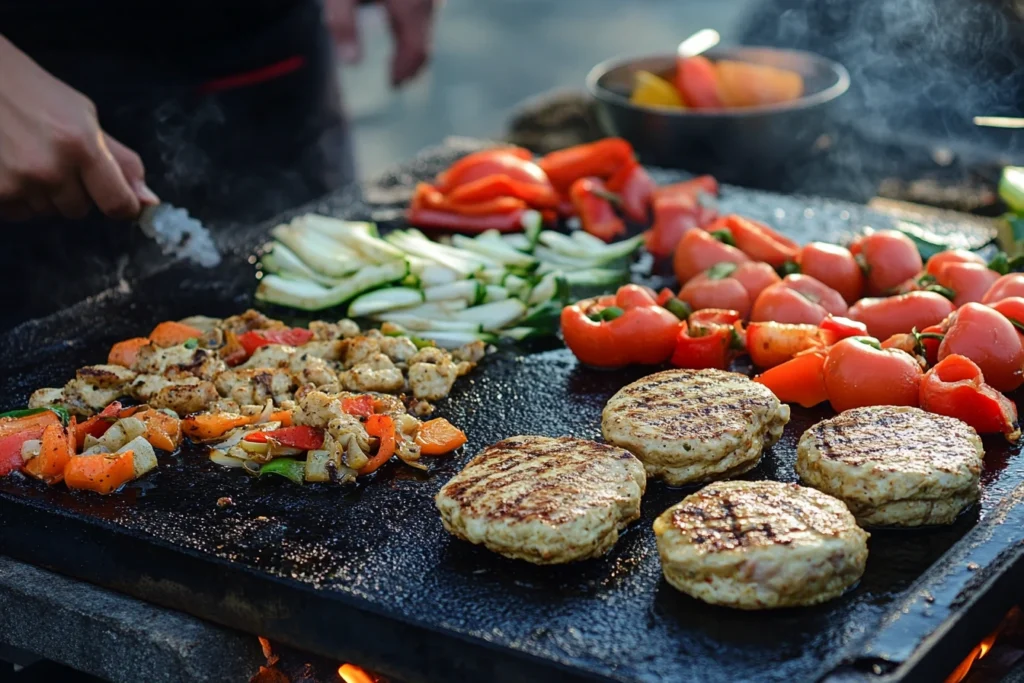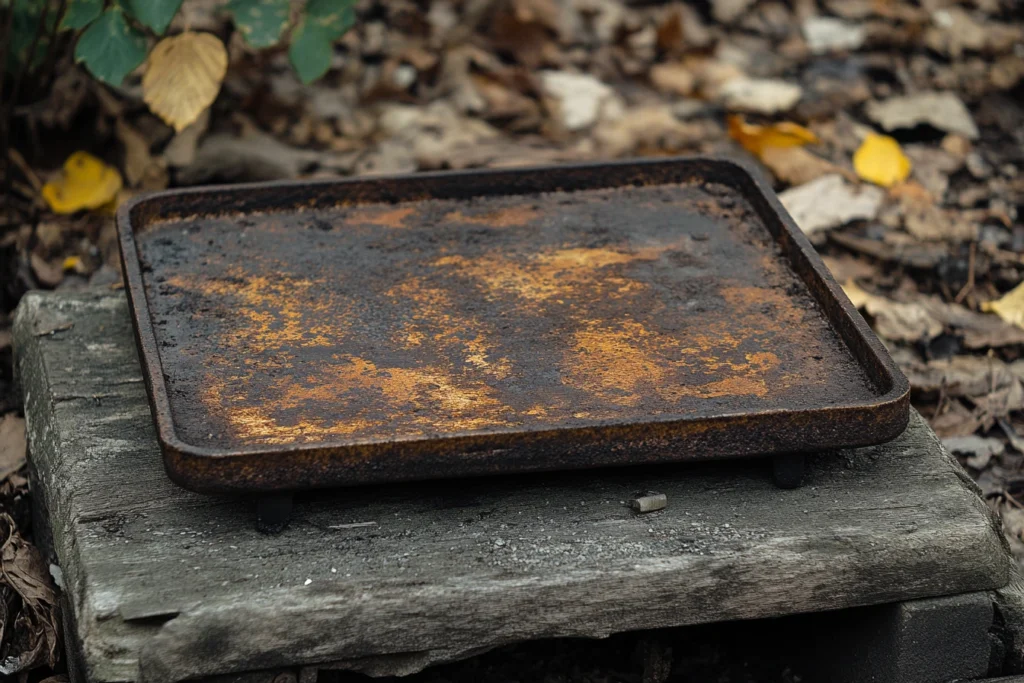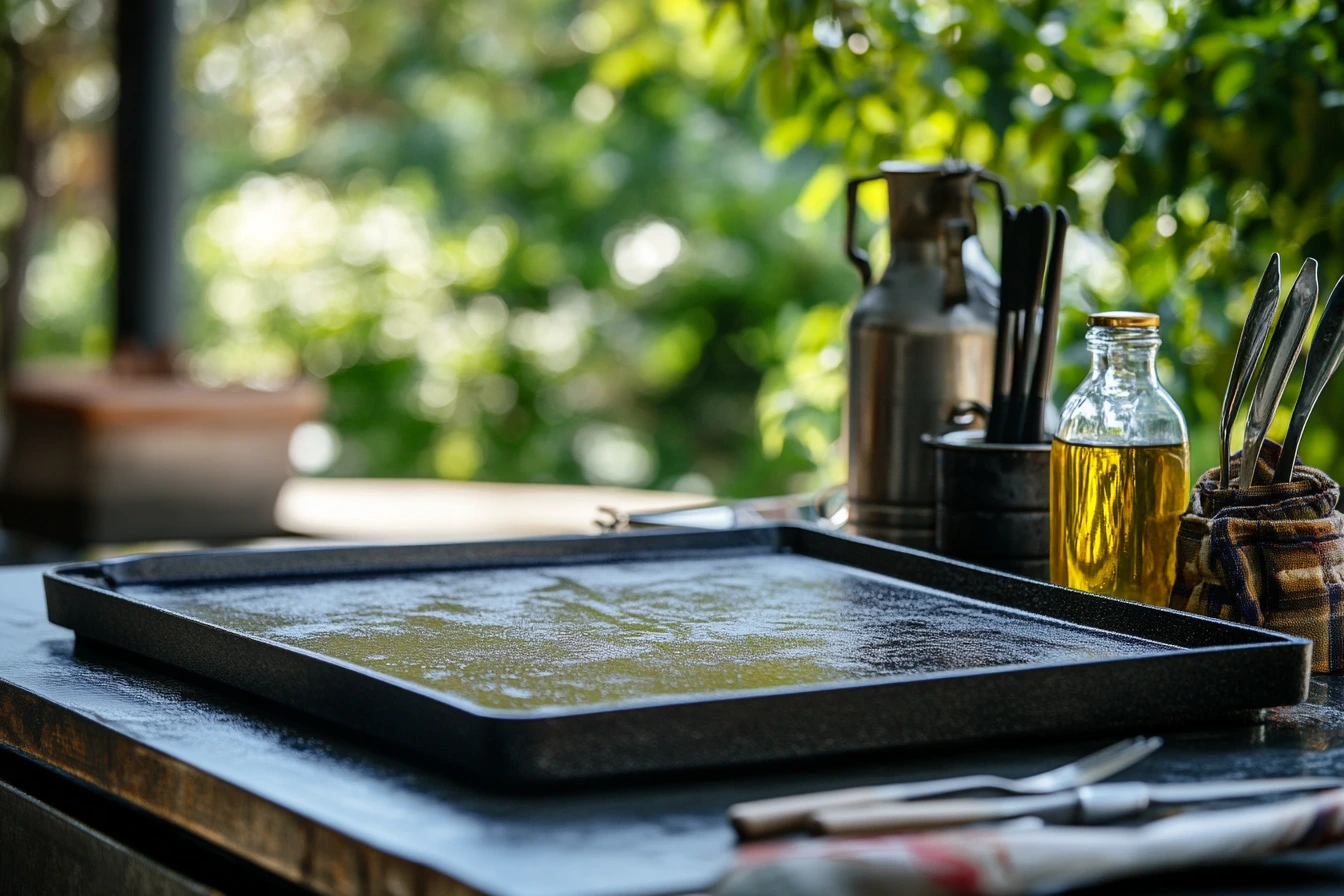Cooking with a Blackstone grill can be an enjoyable and efficient method to cook a variety meals, ranging from breakfast classics as well as gourmet food. But, inadvertent use or maintenance of the Blackstone grill can result in unsatisfactory results, inconsistent cooking and even damage to your appliance. Understanding what not to do on a Blackstone griddle is essential for achieving perfectly cooked meals and prolonging the life of your griddle.
Why Proper Griddle Use Matters
A Blackstone grddle is an extremely versatile device, but it needs the right handling and care for it to work at its highest level. Unpredictable heating, insufficient seasoning or poor cleaning could cause burnt food and sticky surfaces or stretching. If you know the proper way to use the Blackstone grill and following the best techniques, you will ensure consistency in cooking efficiency, protect the cooking surface and increase the overall experience of cooking. If you’re an experienced cook or are just beginning knowing these tips can help you cook tasty, easy meals every time.
Ditch Dinner Stress — Cook Smart, Not Hard 🍽️
35 quick & budget-friendly 5-ingredient dinners to save your evenings. Simple. Delicious. Ready in 30 minutes or less.
Mistakes in Preparation
Skipping the Initial Seasoning
A good seasoning of your Blackstone grddle is an important initial step that a lot of people overlook. It helps create a non-stick surface, increases flavor, and helps protect against corrosion. Knowing what not to do with the Blackstone grill, such as cutting out seasoning, helps you do not have sticky food or difficult-to-clean surfaces.
What Happens if You Skip Seasoning?
In the absence of seasoning, food will stick to the griddle and cook is uneven and rust can form. This can make heating less efficient, and cook can be frustrating.
Using the Wrong Oil
The wrong oil to choose is yet another instance of what to avoid on the Blackstone grill. Oils that have lower smoke point, like olive oil or butter could cause burning and sticking residues.
What Oils Should You Avoid?
Avoid oils such as extra-virgin olive oil or butter used for seasoning since they are easily burned. Instead, you should use vegetable, canola, or flaxseed oil. By following these guidelines, you can avoid the formation of burnt residue and safeguards your griddle.
Uneven Preheating
Preheating is crucial for ensuring consistent cooking. Inequal heating is among the most common reasons should not be done on the Blackstone griddle, because it can result in cooked or undercooked food.
How to Achieve Even Heat Distribution
Let the griddle heat slowly at medium-high temperature. Make use of a thermometer for checking for hot spots and cold spots, then adjust the temperature or moving food when necessary to ensure that the food is cooked evenly.
Cooking Mistakes to Avoid
Overcrowding the Cooking Surface

Overcrowding is one of the most common mistakes when you are learning what to avoid on the Blackstone grid. Overcrowding the griddle will reduce heat distribution and can affect the quality of your food.
Effects on Cooking Time and Quality
If the griddle is crowded cooking, food could cook unevenly, get watery, or fail get a crispy exterior. To prevent this from happening make sure to cook smaller portions and leave a space between each item to ensure proper heat circulation.
Using Metal Utensils Improperly
Utilizing utensils that are sharp or not properly used is another error to avoid when using Your Blackstone griddle. These could scratch or harm the non-stick surface, which can expose the metal’s surface and posing the risk of the rust.
Scratches and Damage to the Griddle Surface
Scratches can reduce the non-stick property on the surface of the grille. Use only utensils made from wood, silicone, or plastic, or use tools made of metal with care to avoid scratching the surface.
Cooking at Incorrect Temperatures
The wrong temperature for cooking is another instance of what is not recommended on the Blackstone grill. The high heat can cause burns to your food, whereas low heat could leave it undercooked.
Burnt or Undercooked Food Issues
To ensure that your food is cooked evenly to avoid uneven cooking, make sure you heat your Blackstone grill to the right temperature for the dish you’re making. Make use of a thermometer for monitoring the temperature of the surface and adjust it accordingly.
Cleaning and Maintenance Mistakes
Using Harsh Chemicals
Cleaning your griddle with powerful chemicals can seem efficient however it could cause damage over the long term. The surface coating, regardless of whether it’s non-stick or seasoned, is fragile and requires attention.
Damaging the Surface Coating
Chemicals that are harsh can eat off the protective coating, which can lead to the griddle getting stuck and rust. Make sure to use gentle dishwashing soap and warm water or cleaning products designed for griddles in order to ensure its durability.
Not Cleaning After Every Use
The decision to skip the cleaning following cooking is a blunder which can cause hygiene problems and permanent harm. Food and grease left over from cooking can get hardened, making the next cleaning process much more difficult.
Buildup of Grease and Food Residue
If food and grease particles are not eliminated promptly, they can form a tough layer. This is not just detrimental to flavor, but it can also harm the gridd as time passes. Clean the surface when it’s warm by using an ice scraper or a damp cloth to avoid the buildup.
Storing the Griddle Improperly

The way the griddle is stored affects the longevity of your griddle. Unsuitable storage exposes it humidity, which causes corrosion as well as environmental harm.
Risks of Rust and Environmental Damage
If you leave the griddle in an unprotected or damp area can cause corrosion and rust. Dry the griddle completely prior to placing it in storage. Make sure to cover it or keep the griddle in an air-tight location to shield it from the elements and wear.
Long-Term Care Errors
Ignoring Regular Re-Seasoning
Seasoning isn’t an once-in-a-lifetime job; it requires regular maintenance to keep the performance of your griddle. In time heating, cleaning and use will wear down the seasoning layer, which leaves the surface susceptible to stick and rust.
Impact on Non-Stick Performance
As the seasoning wears off food starts to stick more frequently, making cooking difficult and cleaning up time-consuming. The lack of seasoning exposes the griddle’s surface to moisture and increases the risk of corrosion. Re-seasoning often builds up your protective coating, making sure that your griddle remains unsticky, resists corrosion and simple to use over time.
Not Checking for Wear and Tear
Griddles experience wear and tear from repeated heating, cooling, and cleaning cycles. If left unchecked, minor damage can lead to major problems, such as uneven heating or surface cracks that worsen with time.
Preventing Structural Damage
Perform routine inspections to catch issues like warping, cracks, or surface scratches early. Warping can interfere with heat distribution, while cracks may compromise the griddle’s safety and functionality. By addressing these problems promptly, you protect your investment and ensure the griddle continues to perform optimally. Regular care and small repairs are much easier and cheaper than replacing the entire griddle.
Safety Mistakes
Using the Griddle Indoors Without Proper Ventilation
Griddles release fumes and carbon monoxide, especially when used with gas. Without adequate ventilation, these fumes can accumulate, posing serious health risks.
Health Risks from Carbon Monoxide
Carbon monoxide is a colorless, odorless gas that can cause headaches, dizziness, and, in severe cases, poisoning. To ensure safety, always use your griddle in a well-ventilated area. If cooking indoors, keep windows open or use a range hood to exhaust fumes effectively.
Leaving the Griddle Unattended
Cooking on a griddle requires constant attention, as the high temperatures involved can quickly lead to accidents if left unsupervised.
Fire Hazards and Accidents
Unattended griddles are a significant fire risk, particularly if grease accumulates or spills. Flames can spread rapidly, especially on gas-powered models. Additionally, children or pets could accidentally touch the hot surface, leading to injuries. Always stay nearby while cooking and have a fire extinguisher accessible in case of emergencies.
Tips for Avoiding These Mistakes
Developing Good Habits
Avoiding griddle mistakes starts with cultivating consistent, effective cooking practices. Small daily habits can significantly improve your griddle experience and ensure long-term satisfaction.
- Preheat Properly: Allow your griddle to preheat fully before adding food. This ensures even cooking and prevents sticking. Use an infrared thermometer to monitor the surface temperature for precision.
- Don’t Overcrowd: Always leave space between items when cooking. This not only allows for better heat distribution but also prevents steaming, which can make food soggy.
- Use the Right Utensils: Stick to non-damaging utensils, such as silicone, wood, or plastic. If you must use metal tools, handle them carefully to avoid scraping or scratching the surface.
- Monitor Cooking Temperatures: Familiarize yourself with the correct cooking temperatures for different foods. Keeping a thermometer handy can help maintain consistency and avoid burnt or undercooked dishes.
By practicing these habits regularly, you’ll set yourself up for success and avoid common pitfalls.
Regular Maintenance and Care
Proper maintenance is essential to preserving your griddle’s performance and extending its lifespan. Neglecting upkeep can lead to poor cooking results, surface damage, or even the need for a replacement.
- Clean After Every Use: Immediately after cooking, scrape off any food residue and wipe the surface clean with a damp cloth. Avoid harsh cleaning agents that could strip the seasoning.
- Re-Season Often: Periodically apply a thin layer of oil to maintain the non-stick surface. This is especially important after deep cleaning or if the griddle hasn’t been used for a while.
- Inspect for Damage: Regularly check your griddle for signs of wear, such as scratches, rust, or warping. Address small issues early to prevent them from escalating into larger problems.
- Store Properly: Always store your griddle in a dry, protected environment. If possible, cover it with a griddle-specific cover to shield it from moisture and debris.
Consistent care not only keeps your griddle in excellent condition but also makes every cooking session more enjoyable and efficient. By combining good habits with routine maintenance, you’ll enjoy your griddle for years to come.
FAQs About Blackstone Griddle Mistakes
What are the common problems with Blackstone griddles?
Common problems include uneven heating, food sticking to the surface, rust development, and damage caused by improper cleaning or storage. These issues often arise from skipping initial seasoning, using the wrong oils, neglecting maintenance, or not cleaning the griddle properly after use. Addressing these issues early and following best practices can help avoid long-term damage.
Can you mess up a Blackstone griddle?
Yes, it’s possible to damage a Blackstone griddle through poor handling. Common mistakes include using harsh cleaning chemicals, scraping with sharp utensils, or leaving it exposed to moisture, which can cause rust. Cooking at excessively high temperatures can also warp the griddle, while neglecting to season it can lead to food sticking and surface corrosion. Proper use, regular maintenance, and careful handling are key to keeping your griddle in great shape.
What can I put on a Blackstone to keep it from rusting?
To prevent rust, apply a thin layer of high-smoke-point oil (such as flaxseed or vegetable oil) after every use. This creates a protective barrier against moisture and helps maintain the seasoning layer. If rust has already developed, scrub the affected area with steel wool, clean thoroughly, and re-season the griddle to restore its protection.
Do you need to oil your Blackstone after every use?
Yes, it’s recommended to oil your Blackstone after each use. Cleaning the griddle and applying a light coat of oil not only preserves the seasoning but also prevents rust from forming. This step ensures the griddle stays non-stick and maintains its durability over time. Regular oiling is a simple yet effective way to keep your Blackstone in excellent condition.
Conclusion: Cook Safely and Smartly on Your Blackstone
Mastering the use of a Blackstone griddle involves more than just cooking; it’s about developing good habits, maintaining the griddle properly, and cooking with safety in mind. Avoiding common mistakes like skipping seasoning, using the wrong tools, or neglecting regular care will ensure that your griddle performs at its best for years to come.
By practicing proper cleaning and maintenance, cooking at the right temperatures, and ensuring safety precautions, you can enjoy consistent results and extend the life of your griddle. Whether you’re making breakfast classics or gourmet meals, a well-maintained Blackstone is your key to hassle-free, delicious cooking.
Cooking on your Blackstone can be a fun and rewarding experience when you treat it with care. With the right techniques and attention, you’ll not only avoid costly mistakes but also make every meal a success. Cook smartly, stay safe, and enjoy the endless possibilities your Blackstone griddle has to offer.
Resources and Further Reading
For more tips, recipes, and insights, explore these related articles on QuicknRecipes:
- Blackstone Recipes: Ultimate Guide to Cooking on a Blackstone
Dive into the best recipes and cooking techniques tailored for your Blackstone griddle. This guide is perfect for beginners and experienced griddle users alike. - Why Soak Cucumbers in Salt Water for Better Salads
Learn how small preparation steps can significantly enhance the flavor of your dishes, much like proper seasoning impacts your griddle’s performance. - Remove Bitterness in Black Bean Soup: Tips & Solutions
Discover practical solutions to enhance the flavor of your meals, applying principles that are equally useful for griddle cooking. - Cooking Beef Short Ribs Seasoned with Oxtail Seasoning
A detailed guide on cooking perfect short ribs, emphasizing temperature control and seasoning, both crucial for griddle cooking. - Can You Use Egg Whites in Burgers?
Explore creative uses of ingredients and how they can improve your recipes, an approach that complements the versatility of Blackstone griddles.
These resources provide valuable information to help you enhance your cooking skills and maintain your Blackstone griddle for long-term use. Explore them for further inspiration!
